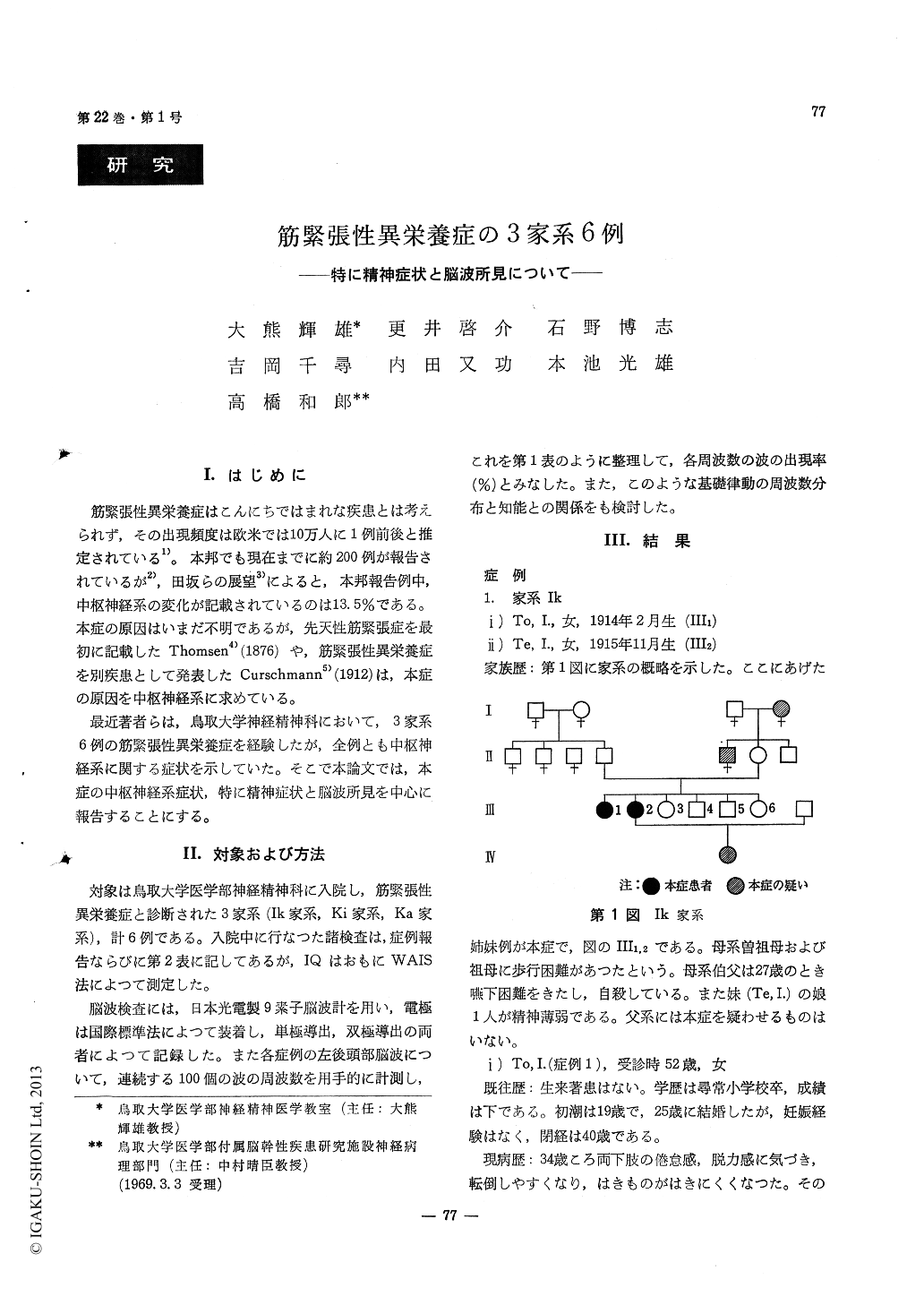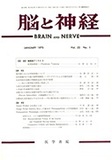Japanese
English
- 有料閲覧
- Abstract 文献概要
- 1ページ目 Look Inside
I.はじめに
筋緊張性異栄養症はこんにちではまれな疾患とは考えられず,その出現頻度は欧米では10万人に1例前後と推定されている1)。本邦でも現在までに約200例が報告されているが2),田坂らの展望3)によると,本邦報告例中,中枢神経系の変化が記載されているのは13.5%である。本症の原因はいまだ不明であるが,先天性筋緊張症を最初に記載したThomsen4)(1876)や,筋緊張性異栄養症を別疾患として発表したCurschmann5)(1912)は,本症の原因を中枢神経系に求めている。
最近著者らは,鳥取大学神経精神科において,3家系6例の筋緊張性異栄養症を経験したが,全例とも中枢神経系に関する症状を示していた。そこで本論文では,本症の中枢神経系症状,特に精神症状と脳波所見を中心に報告することにする。
Six clinical cases of dystrophia myotonica (52 and 50 year old sisters, 56 and 52 years old brothers and 52 and 25 year old father and son) was reported with special reference to the mental disorders and EEG findings.
Although the description of the mental disorders have been relatively few in the previous reports in Japan, various degree of organic brain syndrome such as impairment of intelligence, blunting of the emotions and reduction in initiative was found in all of our cases. In autopsy findings of the 5th case, Alzheimer's neurofibrillary change was found in the brain, especially in Ammon's horn and sub-stantia nigra. Furthermore, EEG showed slowing down of background alpha activity and appearance of the activity, and the degree of slowing did not seem to be parallel to the degree of intelligence disorder. Thus, all of our 6 cases showed evidences of the disturbance in the central nervous system.
The biopsy of muscles revealed the ring fibers and saleoplasmic mass which have been regarded as the specific findings in dystrophia myotonia in 3 cases. The characteristic EMG findings, alopetia, cataracts and evidences of glandular dysfunctions were also described.
Concerning the etiology of the disease, the pro-blems of the central nervous system dysfunction as well as metabolic defect of protein were discussed.

Copyright © 1970, Igaku-Shoin Ltd. All rights reserved.


